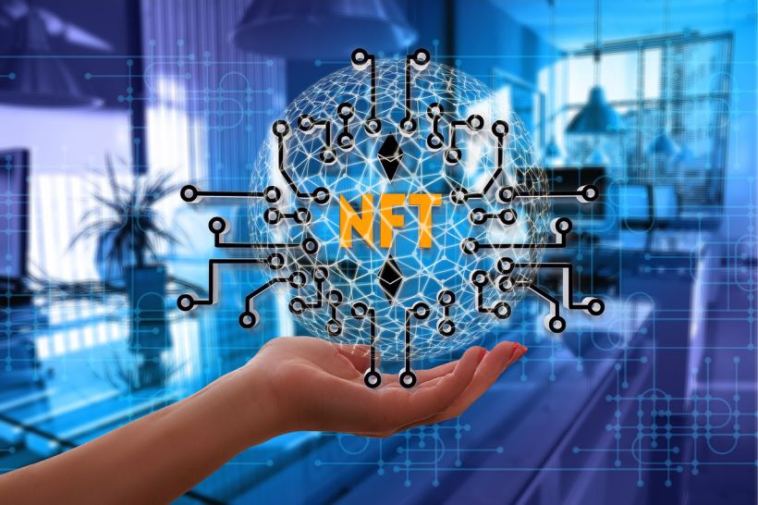- Like
- SHARE
- Digg
- Del
- Tumblr
- VKontakte
- Flattr
- Buffer
- Love This
- Save
- Odnoklassniki
- Meneame
- Blogger
- Amazon
- Yahoo Mail
- Gmail
- AOL
- Newsvine
- HackerNews
- Evernote
- MySpace
- Mail.ru
- Viadeo
- Line
- Comments
- Yummly
- SMS
- Viber
- Telegram
- JOIN
- Skype
- Facebook Messenger
- Kakao
- LiveJournal
- Yammer
- Edgar
- Fintel
- Mix
- Instapaper
- Copy Link
Introduction
An NFT marketplace is a platform that makes it simple to store and exchange NFTs or Non-Fungible Tokens. These tokens may often be purchased or auctioned off at a set price.
To create an NFT marketplace, you need a crypto wallet where you may store your tokens and conduct transactions.
This article will shed light on how to create an NFT marketplace and how it would benefit you.
Features to Include When Building an NFT Marketplace
- Storefront: It functions as a dashboard and is typically part of a prosperous NFT marketplace, and it offers users all the information required for an item.
- Token search: Customers should wholly and quickly receive information about their needs. Every product should be included in the marketplace, sorted with some features. Faster searches buoy customer satisfaction.
- Filters: It is quite advantageous to use filters. Additionally, browsing a website gets simpler. Include this functionality if you want to build a platform for an NFT marketplace for collectibles. By category, payment method, deadline, and listing status, it gives customers the freedom to select assets.
- Bid and buy: Customers must be able to purchase and offer NFTs that have been recorded on the marketplace. The users should be able to read information about the offers’ current state and see the bid validity date in their offers.
- Listings: The creation and sending of digital collectibles by your customers should be easy. Make sure it requires the least amount of work from them. There should be a page where people can upload files and product descriptions. It’s necessary to include information like tags, titles, and definitions.
- Wallet: A wallet that enables users to store, transmit, and receive NFTs and cryptocurrencies should be included in your NFT marketplace. You can develop your wallet or incorporate pre-existing ones into your platform, like Formatic, Coinbase, or MyEtherWallet.
- Ratings: It’s a feature for new users who are unsure where to start, how to choose things fast, or how the system works. Users can determine if a merchant is trustworthy by looking at their ratings. Participants can score other users and provide comments based on their experience in the NFT marketplace. It enables others to evaluate a user’s reliability.
Guidelines to Consider When Creating an NFT Marketplace
- Transparency: Your NFT marketplace must be transparent to provide users with a clear picture of all transactions. The Blockchain network ensures a flawless transaction experience by ensuring an error-free payment process.
- Security: It is a potent element of an NFT marketplace that deals with exchanging tokens between traders. Traders are protected against transaction loss and other needless operations by built-in security.
- Decentralization: You may distribute and duplicate all data to several Blockchain networks with this tool. The network updates its Blockchain for modifications when a new block is introduced.
- Monetization: It would be beneficial to consider this aspect while developing an NFT market. For instance, there is no listing cost on OpenSea; however, the platform subtracts 2.5% from the product cost during sales.
- Creating a smart contract: The initialization of smart contracts does not need commission payments. You can achieve this by electronically signing the contract to minimize intermediaries and fraud.
How to Create an NFT Marketplace
If you want to create your own NFT marketplace for your company, do the following:
- Niche: You may start creating an NFT marketplace development project by selecting a specialization or niche. If you have a rough idea, discuss it with the developers to create a plan and determine how long it will take to complete the market. Experts advise targeting a vertical market as opposed to a horizontal one.
- Design: The UI/UX design is crucial when creating an NFT marketplace. Your user interface must be simple. Good UI/UX improves usability and gives the platform a nice feel and appearance.
- Front-end development: It’s time to put your design ideas into practice. Select a solid structure to achieve your goals. Employ a seasoned NFT developer to guarantee excellent performance and reliability.
- Smart contract token generator: Back-end development looks different when creating an NFT marketplace. As a decentralized platform, the NFT marketplace authenticates most of its data using Blockchain technology.
- Test and launch: This is the most crucial phase in developing an NFT marketplace app. You must locate and eliminate each backlog at this phase. Software testing makes sure the project is operating correctly. To minimize issues and ensure quality performance, post-launch help is also required. This process, in essence, provides app credibility and excellent operation.
The Bottom Line
The time is now to create an NFT marketplace because the popularity of NFT is increasing daily. These markets provide a lot of great features.


